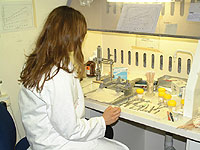 |
|
 |
| |
| |
| |
| |
| |
| |
| |
Campus: Kensington Campus
| |
| |
Career: Postgraduate
| |
| |
Units of Credit: 12
| |
| |
| |
| |
Contact Hours per Week: 0
| |
| |
Enrolment Requirements:
| |
| |
Restricted to students enrolled in the following programs 8760, 5665 and 7435
| |
| |
| |
| |
| |
 |
|
 |
Description
This course provides an introduction to the basic and clinical sciences related to the use of therapeutic substances in primary care optometry. The focus is on the practical clinical needs of the student. In the basic sciences, there is a review of biochemistry with emphasis on topical issues related to common systemci drugs which affect cellular communication. This is reinforced with a review of common cardiovascular, respiratory and immunological disease, AIDS and hepatitis, and their implications for practice hygiene. The epidemiology of systemic drug use in Australia is reviewed, along with the ocular and visual side-effects associated with common systemic therapies. Anterior eye microbiology is reviewed with a strong emphasis on contact-lens-related infection and inflammation. A pharmacist explains drug law in Australia, pharmaceutics with special reference to the eye, and relevant professional relationships with pharmacy. Topics of direct relevance to ocular therapeutics and their use in primary care optometry include - Diagnosis, management and therapy of anterior ocular surface disease (infection and inflammation of the conjunctiva, cornea, eyelids), inflammatory disease of the anterior uvea, diseases of the lacrimal system, congenital and acquired retinal disease, diabetic rettinopathy, age-related maculopathy and glaucoma. The topic of co-management with an opthalmologist is covered in relation to glaucoma and surgery for cataract and refractive errors. Other topics include ocular emergencies, ocular trauma, and neuro-ophthalmic disorders.
|

